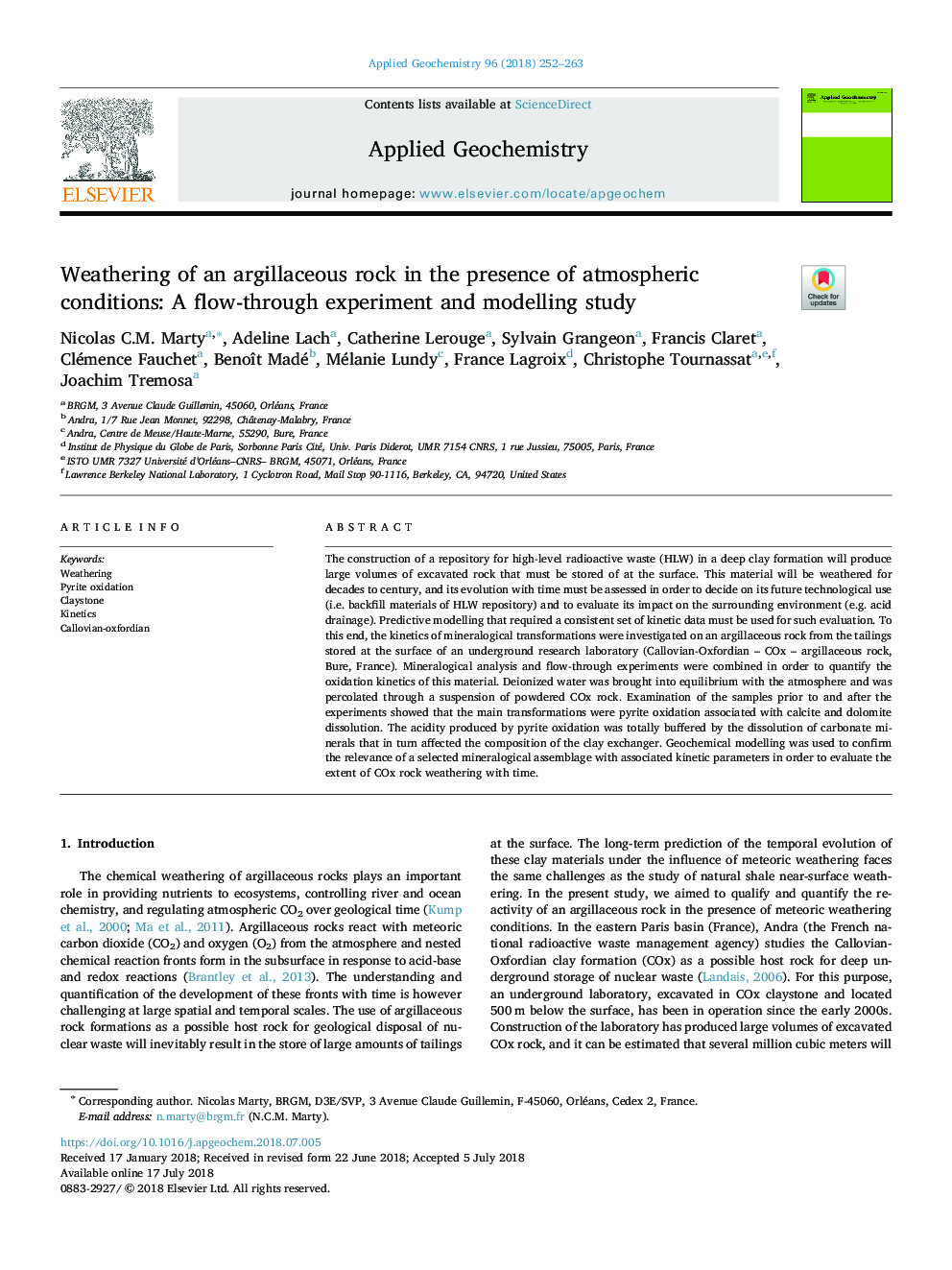| Article ID | Journal | Published Year | Pages | File Type |
|---|---|---|---|---|
| 8863060 | Applied Geochemistry | 2018 | 12 Pages |
Abstract
The construction of a repository for high-level radioactive waste (HLW) in a deep clay formation will produce large volumes of excavated rock that must be stored of at the surface. This material will be weathered for decades to century, and its evolution with time must be assessed in order to decide on its future technological use (i.e. backfill materials of HLW repository) and to evaluate its impact on the surrounding environment (e.g. acid drainage). Predictive modelling that required a consistent set of kinetic data must be used for such evaluation. To this end, the kinetics of mineralogical transformations were investigated on an argillaceous rock from the tailings stored at the surface of an underground research laboratory (Callovian-Oxfordian - COx - argillaceous rock, Bure, France). Mineralogical analysis and flow-through experiments were combined in order to quantify the oxidation kinetics of this material. Deionized water was brought into equilibrium with the atmosphere and was percolated through a suspension of powdered COx rock. Examination of the samples prior to and after the experiments showed that the main transformations were pyrite oxidation associated with calcite and dolomite dissolution. The acidity produced by pyrite oxidation was totally buffered by the dissolution of carbonate minerals that in turn affected the composition of the clay exchanger. Geochemical modelling was used to confirm the relevance of a selected mineralogical assemblage with associated kinetic parameters in order to evaluate the extent of COx rock weathering with time.
Related Topics
Physical Sciences and Engineering
Earth and Planetary Sciences
Geochemistry and Petrology
Authors
Nicolas C.M. Marty, Adeline Lach, Catherine Lerouge, Sylvain Grangeon, Francis Claret, Clémence Fauchet, Benoît Madé, Mélanie Lundy, France Lagroix, Christophe Tournassat, Joachim Tremosa,
